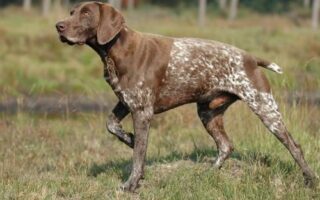In the vibrant tapestry of the dog training world, few subjects ignite as much conversation and curiosity as reactive dog training. Imagine walking your beloved pup, only to find that certain triggers—a passing cyclist, a barking dog, or even a distant sound—send them into a frenzy of barking and lunging. For many pet owners, this scenario can transform what should be a joyful outing into a stressful ordeal. Yet, beneath the surface of this challenge lies an opportunity for deeper understanding and connection between dog and handler. Reactive dog training is not just about managing behavior; it is a journey of empathy, patience, and effective communication. In this article, we will explore the principles of reactive dog training, unveiling strategies that foster not only better behavior but also a more harmonious relationship with our canine companions. Whether you’re a seasoned trainer or a concerned pet parent, there’s something here for everyone seeking to cultivate a calmer and more fulfilling life with their reactive pooch.
Table of Contents
- Understanding the Triggers Behind Reactive Behavior
- Effective Techniques for Managing Reactivity in Dogs
- Building a Strong Foundation with Positive Reinforcement
- Creating a Safe Environment for Training and Socialization
- Q&A
- The Way Forward
Understanding the Triggers Behind Reactive Behavior
Understanding reactive behavior in dogs is essential for effective training and rehabilitation. Several factors can trigger this type of response, and identifying them is the first step toward creating a more harmonious environment. Common triggers include:
- Environmental Stimuli: Sounds, sights, and smells can provoke a reaction. For instance, passing cyclists or sudden loud noises may elicit barking or lunging.
- Fear and Anxiety: Many reactive dogs may react out of fear. Previous negative experiences, such as an aggressive encounter, can cause them to perceive certain situations as threats.
- Social Interactions: Dogs that have had limited socialization may struggle with interactions with other dogs or humans, leading to defensive behaviors.
In addition to recognizing these triggers, it’s vital to consider the individual temperament of your dog. Each animal may respond differently based on their personality and past experiences, necessitating a tailored approach. To further understand and address these triggers, consider monitoring their behavior in various situations. An effective method for breaking down triggers is to use a simple table for reference:
| Trigger Type | Potential Response | Management Strategies |
|---|---|---|
| Sound | Barking, Aggression | Desensitization, Counter-conditioning |
| Visual (other dogs) | Lunging, Growling | Distance management, Focus training |
| Nervous People | Hiding, Growling | Gradual exposure, Positive reinforcement |
Effective Techniques for Managing Reactivity in Dogs
Managing reactivity in dogs requires a blend of patience, consistency, and tailored strategies. One highly effective approach is desensitization, where you gradually expose your dog to the stimuli that trigger their reactivity at a distance they can handle. For instance, if your dog reacts to other dogs, start by observing them from a safe distance before progressively decreasing that space. Pair these encounters with high-value treats to create positive associations. Another technique is counter-conditioning, which involves teaching your dog to associate the previously frightening stimulus with something pleasurable. This can transform a stressful experience into a confident one, making everyday walks much more enjoyable.
In addition to these foundational skill sets, implementing structured training sessions can significantly improve a reactive dog’s behavior. Here are some techniques you can incorporate into your routine:
- Walks in Less Crowded Areas: Seek out quieter areas where your dog feels more at ease.
- Focus Commands: Teach the ”look” or “watch me” command to divert their attention during potential triggers.
- Reward Composure: Reinforce calm behaviors when your dog remains relaxed in the presence of triggers.
Using a well-planned schedule enhances your dog’s training process. Here’s a simple table to consider:
| Time of Day | Activity | Duration |
|---|---|---|
| Morning | Desensitization walks | 30 mins |
| Afternoon | Focus command practice | 15 mins |
| Evening | Reward calm behavior | 10 mins |
By incorporating these various techniques and maintaining a clear schedule, you can successfully guide your dog towards better management of their reactivity, fostering a more peaceful environment for both of you.
Building a Strong Foundation with Positive Reinforcement
When it comes to training reactive dogs, establishing a strong foundation through positive reinforcement is crucial. This approach emphasizes rewarding desired behaviors instead of punishing unwanted actions. By using treats, praise, or playtime as incentives, owners can foster trust and build a more reliable bond with their canine companions. Here are some essential elements to remember:
- Consistency is Key: Regular rewards for positive behavior reinforce learning.
- Patience and Time: Allow your dog to absorb training at their own pace to reduce anxiety.
- Environment Control: Manage the surroundings to minimize distractions during training sessions.
Additionally, creating a structured training plan can enhance the effectiveness of positive reinforcement. Incorporating short, frequent sessions with clear objectives can make progress more manageable. Below is a simple strategy table to guide your training:
| Session Goals | Applicable Reward | Duration |
|---|---|---|
| Recognizing Triggers | Treats for calm behavior | 10 minutes |
| Engagement with Owner | Praises and pets | 15 minutes |
| Focused Commands | Favorite toy | 5-10 minutes |
In each training session, ensure that you maintain a positive and encouraging atmosphere. By embodying a calm demeanor and celebrating small victories, you will not only promote the desired reactions but also enhance your dog’s confidence and enjoyment in training, paving the way for a successfully trained pet.
Creating a Safe Environment for Training and Socialization
Creating a nurturing space is essential when working with reactive dogs. A well-structured environment helps to minimize triggers and allows your dog to focus on learning. Consider the following elements to cultivate a safe and comfortable training zone:
- Controlled Space: Set up a designated area free from distractions.
- Positive Reinforcements: Use treats and praise to create positive associations.
- Calm Atmosphere: Keep noise levels low and reduce sudden movements.
- Safe Distance: Maintain appropriate distances from other dogs or crowds during training.
Socialization should be an enjoyable experience for both you and your dog. Gradually introduce your dog to new people, environments, and other animals, ensuring that each encounter is positive and stress-free. Keep in mind the following strategies to foster effective socialization:
| Tip | Benefit |
|---|---|
| Slow Introductions | Reduces anxiety and fear responses. |
| Regular Breaks | Helps to prevent overstimulation. |
| Identifying Triggers | Allows for tailored training approaches. |
| Frequent Assessments | Ensures ongoing safety and comfort for your dog. |
Q&A
Q&A: Understanding Reactive Dog Training
Q1: What exactly is reactive dog training?
A: Reactive dog training refers to a specialized approach designed to help dogs who exhibit strong reactions to certain stimuli, such as other dogs, people, or certain environments. Instead of overwhelming your pet with these triggers, the training focuses on modifying their responses through positive reinforcement and desensitization techniques.
Q2: What causes a dog to become reactive?
A: Reactivity in dogs can stem from a variety of sources, including fear, anxiety, territorial instincts, or a lack of socialization. Each dog is unique, and their reactivity may manifest as barking, lunging, growling, or even withdrawal. Understanding the root cause is crucial for effective training.
Q3: How can I tell if my dog is reactive?
A: Signs of reactivity in dogs can vary. Common indicators include excessive barking, lunging toward the trigger, body stiffness, raised hackles, and difficulty calming down after an encounter. Observing your dog’s behavior in different situations can provide insight into their levels of reactivity.
Q4: What are some initial steps to take when training a reactive dog?
A: Start with creating a calm and controlled training environment. Familiarize your dog with basic commands to establish a foundation. Gradually expose them to their triggers from a distance where they feel safe, rewarding calm behavior with treats or praise. Keep training sessions short and positive to maintain your dog’s focus and enthusiasm.
Q5: Are there specific techniques used in reactive dog training?
A: Yes! Common techniques include counter-conditioning, where you change your dog’s emotional response to a trigger, and desensitization, which involves introducing the trigger in gradually increasing intensities. Techniques might also include the ‘Look at That’ game, where dogs learn to focus on a trigger at a distance while receiving rewards for calm behavior.
Q6: Should I seek professional help for a reactive dog?
A: If your dog’s reactivity is severe or if you feel overwhelmed, seeking help from a certified professional dog trainer or behaviorist can be very beneficial. A professional can provide tailored strategies and support, ensuring safe and effective training methods for both you and your dog.
Q7: How long does it typically take to train a reactive dog?
A: The duration of training can vary widely based on the dog’s individual temperament, history, and the consistency of training efforts. Some dogs may show improvement within weeks, while others may require months of dedicated work. Patience and consistency are key!
Q8: What should I do if my dog reacts unexpectedly during a training session?
A: If your dog reacts unexpectedly, calmly redirect their attention using a command they know, or create distance from the triggering situation. Avoid punishment, as this can heighten anxiety and exacerbate reactivity. Instead, focus on returning to a state of calm and rewarding positive behavior.
Q9: Can I expect my dog to completely overcome reactivity?
A: While complete desensitization may not be possible for every dog, many can learn to manage their reactions more effectively. The goal is to equip your dog with the tools needed to cope with various stimuli, leading to a more enjoyable walking and social experience for both of you.
Q10: Are there any resources you recommend for learning more about reactive dog training?
A: Absolutely! Consider reading books by reputable trainers such as “Control Unleashed” by Leslie McDevitt or “The Cautious Canine” by Patricia McConnell. Online courses, videos, and local classes can also provide valuable insights and guidance as you embark on your training journey.

Conclusion: Navigating the world of reactive dog training might seem daunting, but with the right strategies and resources, you can help your furry friend lead a happier, more confident life. Remember, every small step forward is a victory!
The Way Forward
In the journey of dog ownership, understanding and addressing reactive behavior is an essential step toward fostering a harmonious relationship with your canine companion. Reactive dog training is not just about modifying behavior; it’s about building trust, enhancing communication, and creating a safe environment for both you and your dog. As we’ve explored the principles and techniques of this training method, remember that patience and resilience are key. Each bark, each growl, and each moment of tension is an opportunity for growth and understanding.
Embrace the challenges with an open heart and a willingness to learn, knowing that progress may come in small, incremental steps. Whether you are just beginning this path or have been on it for a while, the bond you create with your dog through this process will be a testament to your commitment and love. As you move forward, may you find joy in each milestone achieved, and may your shared experiences lead to a lifetime of companionship, trust, and adventure. Here’s to a brighter future together, one where both dog and owner thrive in harmony.



